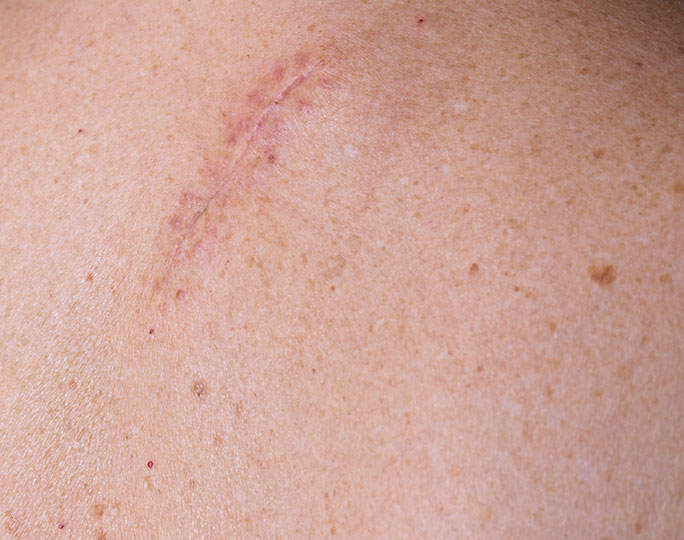
With so many people having Mohs surgery each year to cure their basal and squamous cell skin cancers, it is easy to see why there may be little doubt about it being the best treatment option. It is still surgery, though, and there are steps you can take before, during, and after to have the best results. If Mohs surgery is recommended for you or someone you care about, take the time to learn about the surgery and what you can do to prepare.
Planning ahead to help recovery
When you and your surgeon decide that Mohs is the right treatment for your skin cancer, start talking about recovery—which may take up to a year. Recovery includes many factors, like:
- How the wound is closed. Mohs surgery will leave a wound where the skin cancer used to be. If it is small, the wound may be left to heal on its own or may be closed with stitches. If it is large, you may need plastic or reconstructive surgery. There is no way to know how large the wound is or how it will be closed before surgery starts. You can, though, talk about the options with your surgeon. Ask if a plastic or reconstructive surgeon can be there the day of surgery in case the wound is large. If not, learn when you can have this surgery done.
- How to care for the wound. Before you leave the office, your surgeon and staff will give you instructions for taking care of the wound from surgery. This may include when and how to change bandages and clean the wound and when you can return to normal daily activities. You may be asked to get a prescription or over-the-counter pill or ointment to help heal the scar. You will also be told when to come back to the office to remove any stitches and have the wound checked. Be sure you follow through with these instructions and visits so that your wound stays healthy.
- How to care for your scar. There is also no way to know how large of a scar you may have from surgery. While the wound heals, the scar may be red or bumped up, or it may be hard, tight, or itchy. This should fade in the months after surgery, but it may never totally go away.
Steps to having a better-looking scar
There are steps you can take before and after surgery to help your scar heal in the months that follow. To increase your chances of having a better-looking scar:
- Reduce stress
- Stop smoking
- Eat a healthy diet
- Follow the instructions for follow-up care
- Limit your activities after surgery so that the skin does not stretch
- Protect your scar from the sun
If your scar does not get better over time or you are unhappy with how it looks, you can have another surgery to fix it. This surgery may be done by a plastic surgeon or a surgeon who does reconstruction. There are other ways to help the scar look better if your skin does not heal well:
- Lasers, which are used to reduce redness and smooth the texture of the skin
- Dermabrasion, which is like polishing the skin to even it out
- Scar removal or revision
- Creams and ointments to thin the skin
Explore your options for a better treatment experience
If after learning about Mohs surgery you feel that it is not the right treatment for you, talk with your dermatologist about other treatment options. Skin cancer treatment is about more than curing skin cancer. There are treatments that will cure your cancer without surgery, wounds, or long healing time. Talking with your dermatologist about what to expect from each treatment option is the first step in finding the right one for you.


